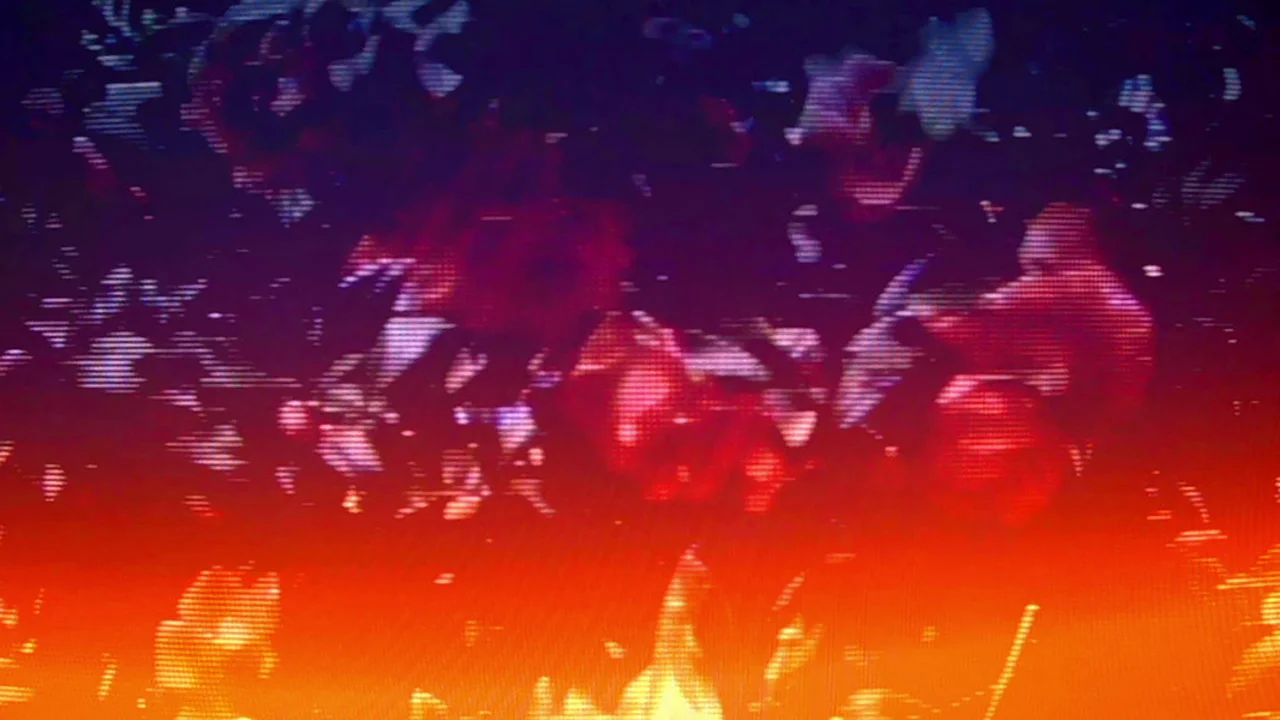Reviews by Zach Dennis and Andrew Swafford
Andrew: This program consisted of 6 short films: 2008 by Blake Williams (friend of the pod), Amusement Ride by Tomonari Nishikawa, Black Sun by Maureen Fazendiero, A Topography of Memory by Burak Çevik, Sun Rave by Roy Samaha, and (tourism studies) by Joshua Gen Solondz.
For me, this shorts program can be neatly divided into two categories: films that messed with my depth perception (2008, Amusement Ride, Black Sun, (tourism studies)), and films that made me unexpectedly emotional (A Topography of Memory, Sun Rave).
Amusement Ride and Black Sun both disoriented me just by aiming cameras at oddly moving surfaces/objects. The former mounts a camera somewhere on the inside of a ferris wheel and observes all the circular mechanics of the ride rotating in different directions and at different speeds/distances, all the interlocking parts slowly going in and out of phase with one another. Black Sun, on the other hand, accomplishes this just by observing nature. Shooting on low-res, scratchy celluloid film that is bleached in various monochrome colors, Maureen Fazendiero points her camera at clouds, waterfalls, and, at one point, a river glistening in the sun, which was moving in such a uniform manner that I stopped seeing the water entirely.
(tourism studies) was something else. It’s hard to say what we were ever looking at at any given time because the rapid fire editing made for a strobing effect, often between images that were of different aspect ratios, which ultimately made for an experience of visual whiplash. I’m not sure what more to say about it than that, but it sure was a visceral ride.
Another disorienting one was Blake Williams’s 2008, which consisted mostly of 3D images of VHS scanlines crawling up and down a bulbous analog television screen. This was one of my favorites, and I know it was yours, Zach. Care to give a quick breakdown of how that one affected you?
Zach: During 2008, I was thinking about how Williams meshes the reality on screen with the effect you described, which seemed to merge real life with digital in this astounding way. I was thinking about how, even though the year is 2008 in the title, it seems to speak to an even more modern sensation of seeing reality through a digital lens whether just regular photos or video, but also Instagram and Snapchat.
It was as if these moments were taking place but the effects he placed on it – be they 3D images of the VHS lines or just the analog screen – kept you from really emotionally investing in what the images were. I found that really perceptive.
I wasn’t as high on Amusement Park as you were, but did enjoy Black Sun quite a bit as it seemed to accomplish the same effect as 2008 but in a different sense. I’m curious to get your perspective on A Topography of Memory, which a movie you enjoyed but I found to be an absolute drag.
Andrew: With a 30 minute runtime, A Topography of Memory was the longest film in the program by a considerable margin, and I think I needed the time to really figure out what I was looking at and process it emotionally. The films sound and image operate completely independently of one another, and neither really announce their purpose immediately.
Visually, the film is comprised of surveillance cam footage that slowly pans back and forth across various landscapes of Istanbul, Turkey. However, it didn’t immediately register to me how the images were captured – I was seeing low-res vistas captured with these repetitive camera movements, but what I assumed was a cerebral pursuit at the hand of an artist trying to create interesting textures and movement eventually turned out to be completely robotic, automated, and sinister.
Sonically, the film is overlaid with a conversation from a family driving in the car together that at first seemed completely banal, but later became deadly serious as they began discussing the election that (we discover) they are driving to participate in. The son has a very different perspective than his mother, who believes one candidate to be a literal murderer. I don’t know nearly enough about the political landscape in Turkey to be able to say which of the speakers has been consuming misinformation, but one of them certainly is. The conversation is given a great amount of weight by the fact that we experience it alongside the visual machinations of the surveillance state – and yet, it’s just a casual family conversation, like most casual family conversations.
It reminded me of Frank Borzage’s The Mortal Storm (a quiet family drama set in Germany during Hitler’s rise to power), another film that brings into clear focus how most people experience the rise of authoritarian governments: as a mundane part of everyday life, to be balanced with obligations to family and one’s own immediate concerns, only becoming obviously malicious when it’s already too late. It, uh, hit a little close to home, and I wasn’t expecting to have to deal with all those emotions during a program of avant-garde shorts.
The only other film we haven’t talked about is the program’s titular short, Sun Rave, which also featured narration over landscapes. In this case, the narration was about the speaker’s experience listening to number stations during political unrest in Beirut (there’s a joke in there about him being interested because he overheard something about “Magnetic Fields,” thinking it was in reference to the band) and his family’s experience uprooting itself many times over. It didn’t move me quite as much as A Topography of Memory because it felt much more fragmented, but it was the short that played directly after Topography and I was still in my feelings enough to be affected by this, too.

